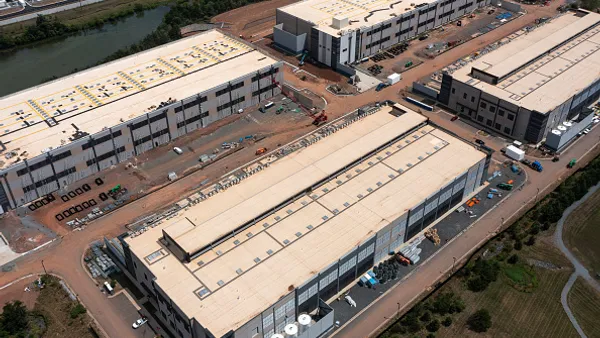It’s a familiar construction industry story: A small contractor starts to grow, hire more people, take on larger jobs and expand its portfolio. Everything moves smoothly — until it doesn’t.
That’s how it went for Hartzell Construction in Pompano Beach, Florida, which began life as a roof-cleaning and painting company more than 70 years ago. Today it employs 150 staff and subcontractors and does everything from concrete restoration to fencing and railing fabrication to commercial and residential remodeling. When CEO Anderson Pinto began with Hartzell in 2007, he was determined to help the company become one of the leading names in South Florida construction. He turned to various software products but soon discovered that each of their solutions was singular. It was difficult to grow, he said, because the company was “running everything through QuickBooks and using so many different software products” and the systems weren’t talking to one another.
Collaboration, Cohesion, Communication
Pinto had run into a common problem of a disjointed system: information silos. Each department had its own spreadsheets, used stand-alone applications and wasted time duplicating information (which led to errors). The result: Information that wasn’t well integrated. “I needed a system that my accounting department — which is the heart of the company — could utilize that would be a true accounting system that could communicate with my scheduling department and my estimating department,” he said.
The construction industry has used software for decades, but not until the advent of cloud computing could all the pieces of information gathered by individual software products truly integrate with one another and offer the kind of real-time information necessary for success. When communications are disjointed, “you can lose information, there’s lost visibility, projects get delayed,” said Joel Hoffman, a senior product manager at Acumatica, a technology provider that offers cloud-based construction and accounting software. “And in construction, your ultimate goal is to come away with a project that’s done under budget, on time and is profitable to you.” That can’t happen when project components are scattered.
Collaboration, cohesion and communication are the new buzzwords. Those are best accomplished by a cloud-based construction and accounting product that gathers your processes in one place so that your data is available to you and your core team anytime, anywhere — in the office or on-site for a project.
Single Source of Truth
After some trial and error with systems that he said had “too many hiccups” — such as the need to jump from one screen to another — Pinto discovered Acumatica Construction Edition, mobile, cloud-based construction and accounting software that oversees the complete life cycle of a project and provides company-wide access to real-time data.
There’s no double entry, no trips back and forth to a job site to deliver paperwork. People in the office and the field work in tandem with all the up-to-date information at their fingertips. For example, a project manager in the field can submit an expense report from a mobile device while on-site. The expense report goes directly to Acumatica Construction Edition, where a manager looks at it, approves it and turns it into an accounts payable invoice. You can even specify a particular person who might need to see that expense. “This is a value-add since it cuts down on administrative overhead and helps you avoid the frustration of a manual process. And with the instant visibility of job costs, everyone has access to the same information at the same time,” Hoffman said. “Think of it as a single source of truth.”
Real Time. Real Success.
Acumatica Construction Edition provides reports or data-loaded dashboards so that you can be proactive — such as knowing right away that you’ve hit 75% of your budget on a project that’s only 50% complete. You can provide customers and vendors access to what you want them to see. It also has some unique features unseen in the construction-software world: Suppose you also manufacture and produce something; that information can be transferred into your job costs. Acumatica can also integrate inventory as part of the app.
The other unique feature is Acumatica’s flexible-pricing strategy. You pay per transaction and not per seat, which is great if your number of users fluctuates seasonally.
Pinto said he appreciated how Acumatica Construction Edition was tailored to his needs and made the workflow much better by easily connecting with and integrating information from applications he was already using, such as Smartsheet and ProEst. And in today’s business climate, he said, he’s glad he can access information while he’s out of the office: “Clients don’t want to wait 24 hours for answers, and now we don’t have to do that.”
Learn more about Acumatica’s services and how they could transform your business by visiting the company website.










